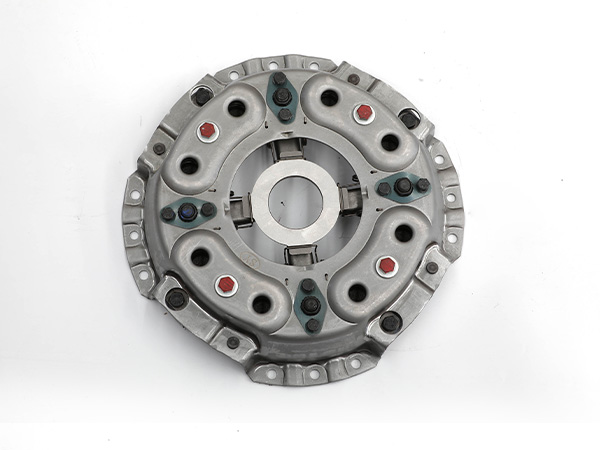A tractor clutch is a mechanical device used on tractors and other agricultural machinery to engage or disengage power transmission between the engine and transmission. The clutch plays a vital role in controlling the flow of power from the engine to the driveline, allowing the tractor to start, stop and change gears smoothly. The tractor clutch manufacturer will give you a detailed introduction from the following aspects:
Tractor clutch types

Tractors use different types of clutches based on their design, application, and power transmission requirements. The two main types of clutches found in tractors are mechanical clutches and hydraulic clutches. Additionally, some modern tractors may use a combination of these technologies.
Mechanical Clutches
- Single Plate Dry Clutch: This is the most common type of mechanical clutch used in tractors. It consists of a single friction plate and a pressure plate. When the clutch pedal is engaged, the pressure plate is released, allowing the friction plate to disengage from the flywheel, interrupting power transmission. When the clutch pedal is disengaged, the pressure plate engages the friction plate, restoring power transmission.
- Multiple Plate Clutch: Some larger tractors or those designed for heavy-duty applications may use multiple plate clutches. These clutches have multiple friction plates interleaved with steel plates, providing greater torque capacity.
Hydraulic Clutches
- Hydraulic Wet Clutch: In this type of clutch, oil is used to transmit power and cool the clutch components. It often consists of multiple friction plates immersed in oil. When the clutch is engaged, hydraulic pressure separates the plates, allowing for power transmission. Hydraulic clutches are known for smoother engagement and better heat dissipation.
Combination Clutches
- Dual Clutch Systems: Some modern tractors use a combination of mechanical and hydraulic clutches in a dual clutch system. This system often includes two separate clutches in a single housing – one for the high range and the other for the low range. It allows for seamless shifting between ranges without interrupting power delivery.
- Power Shuttle Clutch: Tractors equipped with power shuttle transmissions may have a separate clutch for controlling the direction of travel. This clutch allows the operator to shift between forward and reverse without using the main clutch. It improves operational efficiency, especially in applications requiring frequent changes in direction.
…
More detailed information can be found by clicking here: https://www.syclutch.com/news/tractor-clutch.html


